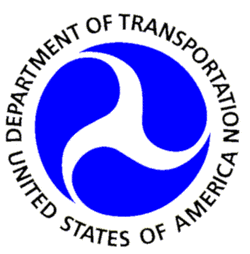Fri, Apr 23, 2010
Airlines Had Requested Relief At Congested New York Region
Airports
 The U.S. DOT today denied the requests of five airlines for a
temporary exemption from the new rule limiting tarmac delays. As a
result, all U.S. carrier flights covered by the rule will be
subject to its terms effective April 29.
The U.S. DOT today denied the requests of five airlines for a
temporary exemption from the new rule limiting tarmac delays. As a
result, all U.S. carrier flights covered by the rule will be
subject to its terms effective April 29.
"Passengers on flights delayed on the tarmac have a right to
know they will not be held aboard a plane indefinitely," U.S.
Transportation Secretary Ray LaHood said. "This is an important
consumer protection, and we believe it should take effect as
planned."
The tarmac delay provision was part of a new airline passenger
protection rule, issued last December, that prohibits U.S. airlines
operating domestic flights from permitting an aircraft to remain on
the tarmac at large and medium hub airports for more than three
hours without deplaning passengers. Exceptions were allowed
only for safety or security reasons or if air traffic control
advises the pilot in command that returning to the terminal would
disrupt airport operations.
On March 4, JetBlue Airways asked for an exemption from the rule
for its operations at New York's JFK Airport until that airport's
main runway, currently under construction, reopens on Dec. 1. That
request was followed by similar requests by Delta Air Lines and
American Airlines for their operations at JFK, by Continental
Airlines for their flights at New York LaGuardia Airport and Newark
International Airport, and by US Airways for Philadelphia
International Airport. The carriers argued that, without the
requested exemption, large numbers of flights will have to be
canceled at the New York area airports and affected passengers will
face significant inconveniences and delays before being
accommodated.

Ray LaHood
In denying the requests, the Department concluded that airlines
could minimize tarmac delays by rerouting or rescheduling flights
at JFK to allow the airport's other three runways to absorb the
extra traffic. The Department also noted that it has the ability to
take into account the impact of the runway closure and the harm to
consumers when deciding whether to pursue enforcement action for
failure to comply with the rule and the amount of a fine, if any,
to seek as a result of non-compliance.
More News
“While legendary World War II aircraft such as the Corsair and P-51 Mustang still were widely flown at the start of the Korean War in 1950, a new age of jets rapidly came to >[...]
Decision Altitude (DA) A specified altitude (mean sea level (MSL)) on an instrument approach procedure (ILS, GLS, vertically guided RNAV) at which the pilot must decide whether to >[...]
Aero Linx: National Aviation Safety Foundation (NASF) The National Aviation Safety Foundation is a support group whose objective is to enhance aviation safety through educational p>[...]
Also: Cal Poly Aviation Club, $$un Country, Arkansas Aviation Academy, Teamsters Local 2118 In response to two recent general aviation accidents that made national headlines, more >[...]
“The FAA is tasked with ensuring our skies are safe, and they do a great job at it, but there is something about the system that is holding up the medical process. Obviously,>[...]
 Aero-News: Quote of the Day (04.28.25)
Aero-News: Quote of the Day (04.28.25) ANN's Daily Aero-Term (04.28.25): Decision Altitude (DA)
ANN's Daily Aero-Term (04.28.25): Decision Altitude (DA) ANN's Daily Aero-Linx (04.28.25)
ANN's Daily Aero-Linx (04.28.25) Airborne-Flight Training 04.24.25: GA Refocused, Seminole/Epic, WestJet v TFWP
Airborne-Flight Training 04.24.25: GA Refocused, Seminole/Epic, WestJet v TFWP Aero-News: Quote of the Day (04.29.25)
Aero-News: Quote of the Day (04.29.25)




